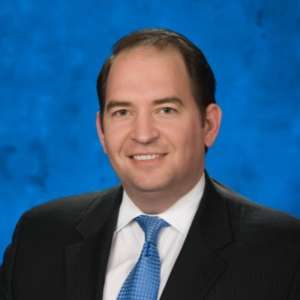
VA regulatory change driving a ‘sustained organizational commitment’ to customer service
Lee Becker, the chief of staff of VA’s Veterans Experience Office, said winning a Service to Citizens Award shows just how far the agency has come over the past...
Trust is at the center of every program and project across the Veterans Affairs Department. The goal, over the last five-plus years, has been to rebuild the trust of veterans, particularly in how the agency delivers healthcare.
VA’s most recent data shows great strides, but it’s the institutionalizing of those efforts that will produce long-term change.
Lee Becker, the chief of staff of VA’s Veterans Experience Office, said the department not only expects to exceed its long-term goal of improving customer service, but make it a permanent part of its employees’ expectations and actions.

Secretary Robert Wilkie recently signed an order to change the code of federal regulations—U.S.C. 38 CFR—to add customer service principles in part zero and to measure customer experience through how effective and easy it is to provide care to veterans.
“We are making sure we are providing care with emotional residence by treating every veteran, family member, caregiver, survivor with the utmost respect. In the end, that is what drives trust,” Becker said in an interview with Federal News Network. “This shift to really that true culture of customer experience really takes many, many years. We have been taking these bold moves to reinforce our focus around our customers, our veterans, to ensure that the overall experience is the highest that it can be.”
Becker said changing the code of federal regulations is more significant of change than just issuing new policy or writing a memo.
“We are saying for everything we do it’s going to be with that lens in how we approach providing the best care, benefits and services,” he said. “Under 38 CFR, part zero is where our VA core values are codified. We created an amendment to that and added customer experience principles. What it really does for is hold us accountable to those principles.”
Becker said by changing the CFR, VA now has more permanent and long-term rules in place so future administrations, based on that policy, can set the goals and objectives.
The decision to change the Code of Federal Regulations to include customer experience is part of the reason why VA won a 2019 Service to Citizen Award earlier this month.
This codification of customer services come about a year after Wilkie signed VA’s first customer service policy to further sustain long-term efforts.
The Trump administration has made customer service a cross-agency priority goal with VA being one of the program’s co-leaders. This focused effort helped VA, among other agencies, improve customer service, according to a May 2018 survey by Forrester Research. The most recent data from the President’s Management Agenda shows agencies should have a customer experience dashboard to track their progress against governmentwide and agency specific metric some time in 2019.
But VA has its own goals it’s striving toward, including reaching the 90% mark on the veterans trust scale.
Becker said the Veterans Health Administration, for example, developed a patient experience program.
“It is a full suite of actions to address people, process, technology and engagement to enable that ultimate patient experience to happen,” he said. “At every veterans medical center, there are employees who are red coat ambassadors because veterans have told us it’s hard to navigate medical centers. That provides a very warm connection and high touch with our veterans to make sure they can navigate the facility properly.”
VA also has been rolling out “on the moment” training to make employees aware of and empower them to own the moment to make the veterans and their families’ experience as best as it can be.
“We’ve seen the facilities that have been implementing it fully have actually increased trusted and have an increased experience. Overall, we’ve seen a 2% increase over the past year in customer experience,” Becker said. “We have trained over 50,000 employees with this concept. This training is based off of some of the best practices in the private sector. We’ve also taken some of the best practices of medical centers, who have been doing a great job in how they address customer experience, and we’ve used that for this training.”
As for that 90% goal, Becker said it’s an aspirational goal that is achievable by September 30.
“When we think about how we have been able to get to where we have been able to get to right now and the progress we’ve made, it’s really been through partnerships internally and externally. When you talk about real culture change, that occurs when you have a common mission and there is no competition about how is competing that mission,” he said. “Customer experience takes time. It’s not something that happens overnight. As we’ve demonstrated some of our early successes and we are seeing even more successes in how we are improving experience, as agencies look at us and we look at other agencies, we realize that it’s a journey and through working together, we will get there together.”
Copyright © 2025 Federal News Network. All rights reserved. This website is not intended for users located within the European Economic Area.
Jason Miller is executive editor of Federal News Network and directs news coverage on the people, policy and programs of the federal government.
Follow @jmillerWFED





